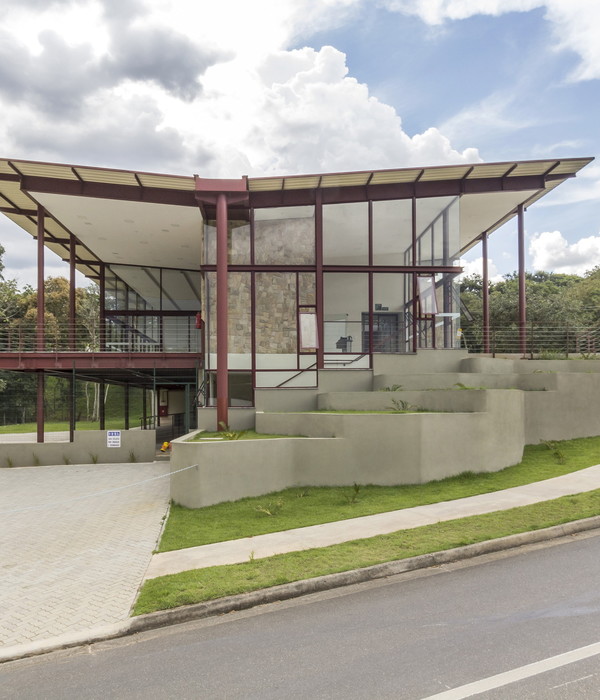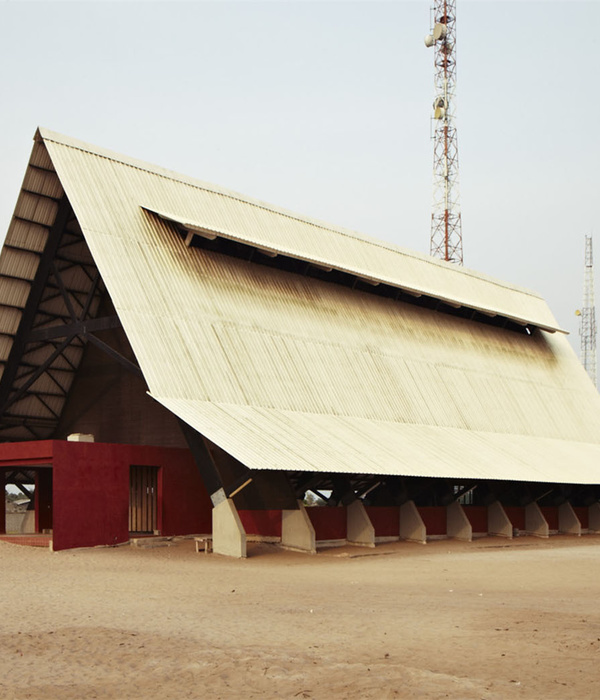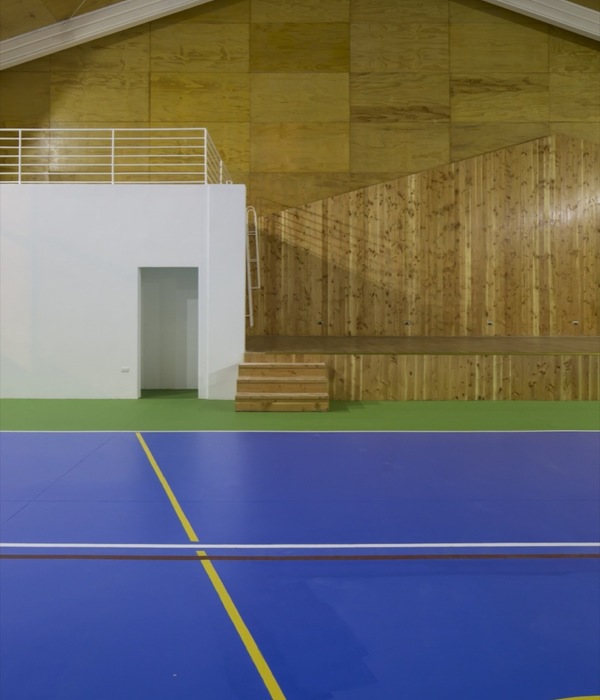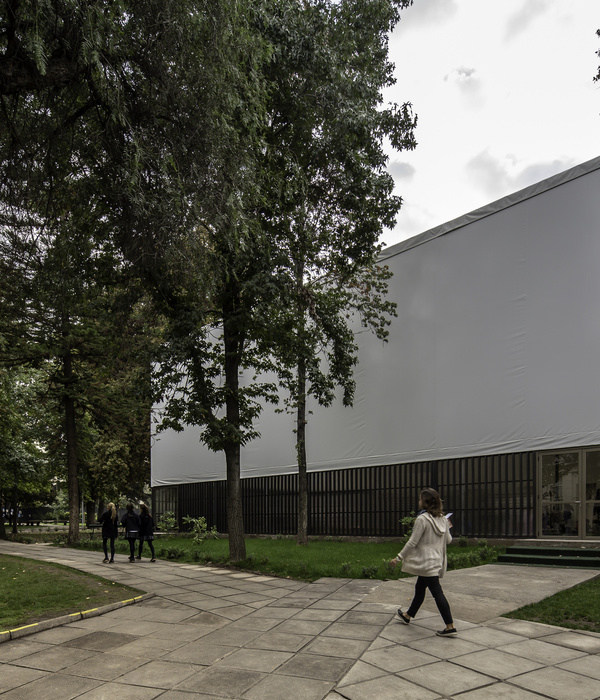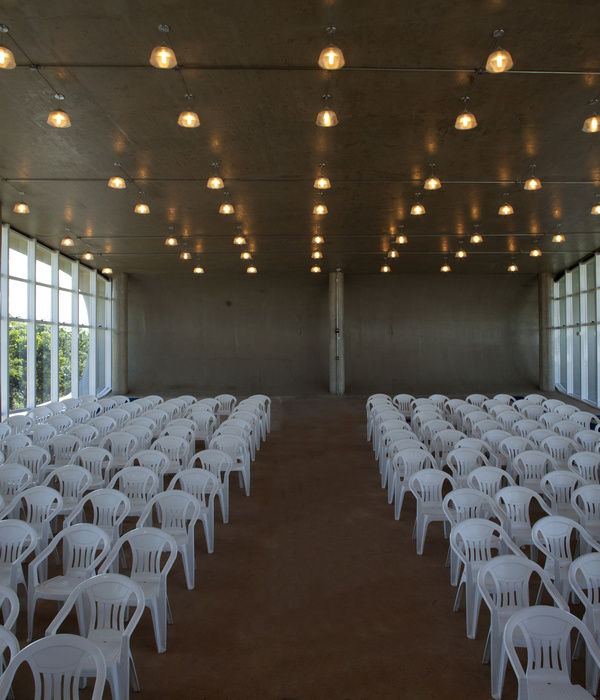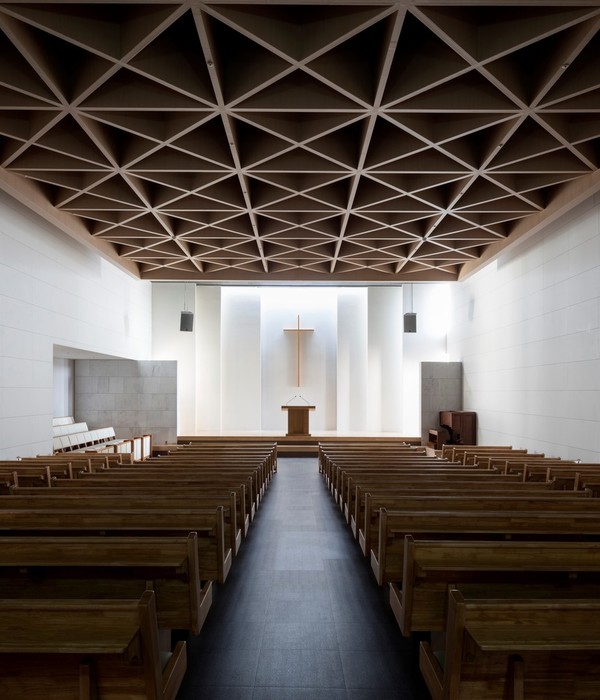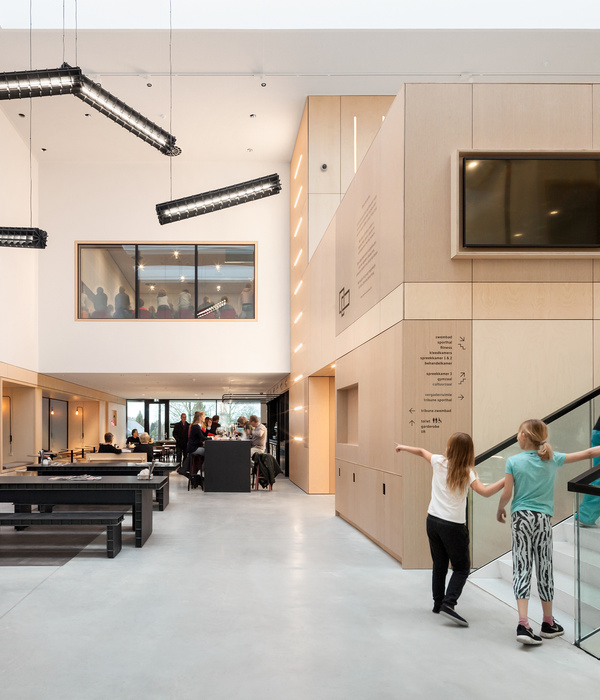The Quakers Centre in Melbourne is a renovation and addition to a 1960s office building on the edge of the Melbourne CBD. The building houses the Quaker library, offices and a meeting room that will be used for worship on Sundays and is intended for other meetings during the week, such as the local Islamic community. The site is a triangular wedge of leftover space between the north-south orientated greater Melbourne grid and the city grid, which is rotated approximately 28°. A number of shifting asymmetrical circles have been inserted within the triangular space to detonate the shift between the city and surrounding suburbs, notating an almost subconscious sense of our placement in the wider environment.
Much time was spent discussing Quaker philosophy, world peace and Quaker history with the clients. Out of these discussions came an approach which embraced simplicity and honesty. Quaker astrophysicist Sir Arthur Stanley Eddington’s 1927 lecture on the two tables (as discussed by Graham Harman), in which objects are described as co-existing duplicates: objects of everyday reality and that of physics, was important in considering the creation of a multi-dimensional space which embodied simplicity in all its complexity.
The circle, a Quaker symbol, is both physical and virtual in the worship space, inscribed in the ceiling and floor forming a shifting circular space with no walls. The circular space floats in the triangular plan as a traversable flexible boundary, which changes depending on the time of day and the lighting conditions, forming a virtual space object. Meetings in the worship space begin with an hour of silent thought and meditation as members sit in circular formation. The shifting asymmetrical circles inscribed on the floor allow for multiple circular group sizes for those using the space. The space connects with the sky through the skylight which punctures the tent form, one of the oldest architectures of worship, forming a quiet oasis on the edge of the city.
The building is consciously understated, the spaces adjusted slightly to expose the old structure and substance of the original building. Subtle interventions have been included to offset this experience of casualness, such as the worship space, the library seat, the balcony and the front stair. The central worship space is hidden upstairs, in the middle of the triangular plan, which sometimes, depending on the time of day and lighting, is a subtle central space, and sometimes highlighted as an ephemeral spiritual zone defined by mirrored carpet and roof void, forming a hovering space.
The building reveals itself in fragments, never as a whole. The roof appears in distant views from the city like a primitive mountain or tent amongst skyscrapers, but as you approach the building it becomes hard to view except in fragments. The understated street frontage reveals the interior reception and library. The interior worship space hides from the city under the tent form and relates to the outside through the balcony to the courtyard (and future garden). The sequence is designed to be subtle and mysterious and to connect those inside to the sky and garden outside.
The desire of the clients to avoid normal church tropes, to create a type of anti-church, forced a design response that avoided overt Christian symbolism and monumentality, focusing instead on the humble reality of the 1960’s office building and an honest and respectful approach to this existing building, as well as creating a relaxed informal atmosphere in which to meet and contemplate. The project attempts to hover between everyday reality and the spiritual, as seen by the casualness of the placement of new elements and objects alongside the remnants of the prosaic office shell. The central circle is an understated zone in which to contemplate and look up at the sky while sometimes transforming into an ambient zone of colour. The contrast between the inserted objects and spaces, and the remodeled existing space helps form an ever-changing contemplation of the reality in which we live.
{{item.text_origin}}


